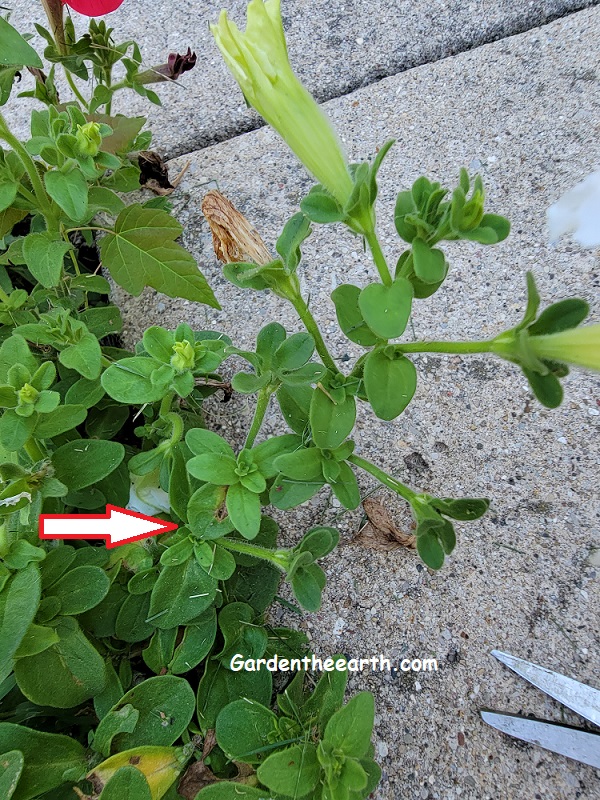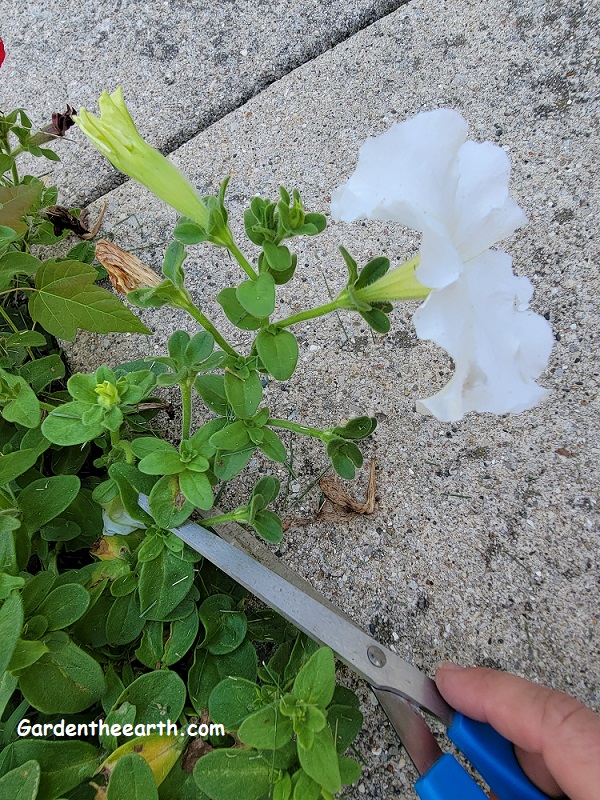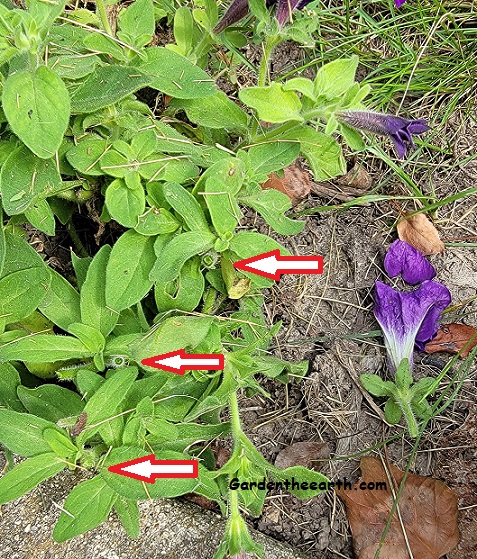How To Keep Petunias Full And Flowering
Beautiful petunias bursting with flowers are first to be seen where ever flowers are sold. But to keep petunias full and flowering all season requires some regular attention.
Petunias are one of the more labor-intensive annuals to maintain to keep looking their best. But it’s not a reason to forgo enjoying them. You can cut back leggy petunias and have mounds of flowers again. Simply learn how they grow, what you need to do to keep them blooming and how to care for them, and you will keep your petunias full and flowering all season with minimal regular maintenance.
How To Deadhead Petunias
Deadheading is a process of removing the ability of a plant to form a seed after the flower has faded. Removing the ability of a petunia to produce a seed encourages them to continue to produce more flowers as they attempt to produce more seed pods. Petunias develop quickly to produce flowers so therefore need deadheading often to keep plants compact and consistently blooming.
How Petunias Grow

Each petunia flower has its own stem (calyx). The flower grows out of the center, surrounded by the sepals – the daisy-like leaves.
When the flower fades, a seed pod begins to form in the center of the sepals (shown in the picture).
The calyx (stem) should be removed before the seed pod starts to form in the center of the sepals by cutting it off at the main stem. A seed pod as small as the one shown is not detrimental to the plant because it has just begun to form.
Only removing the dead flower will not stop the formation of the seed pod. The sepal (daisy-like leaves) must be removed because this is where the seed pod forms.
To keep petunia’s looking their best, they need regular maintenance by deadheading.
Whether planted in a hanging pot or grown in a bed, standard petunias will require regular deadheading to maintain compact growth.
How often you need to deadhead will depend on the plant, but expect they will need attention every 3-4 days.
When deadheading a petunia, the objective is to remove the oldest stems in random locations around the plant each time you deadhead. Remove about 1/3 of the stems.
The petunia will always be in the process of blooming and growing new buds so you get the best flower display on compact plants all season.
Before deadheading, make sure that your plant is healthy – plants drooping from under or over-watering can be stressed.
Deadheading requires the plant to expend energy to create new leaves, buds and stems. If the plant is dry water first and allow it to perk up.

Close to the base of the plant, look for where the last petunia bloomed and the new leaf node is forming.
This is where you will cut the stem and the calyx off.
You will sacrifice new blooms in this process, but it is necessary in order to keep the plant blooming continuously.

Use sharp scissors or pruners. You want to make a sharp cut across the end of the stems.
Petunias leave a sticky residue behind which will easily wash off from hands and tools.
After the stem is cut, the leaf node left behind will grow new buds and stems.
Remove more older stems in random locations around the plant so they can start making new buds.
As you repeat this process, the plant will always be successively blooming and forming new buds and stems.
How To Rejuvenate Petunias
Sometimes we let our petunias go too long between deadheading and they get “leggy”. This term is commonly used to describe a plant with long stems that have few blooms and the plant has lost its compact shape.
We may also choose to prune petunias about two weeks before a party or family gathering so they are in full bloom just in time for arrival of guests.
Fortunately, healthy petunia respond well to severe pruning and will rejuvenate with new buds. Pruning requires that most of the flowers be removed and you could be without flowers for about 1-2 weeks.
Before pruning , it’s very important that your petunia plants are healthy. Pruning requires the plant to expend energy to create new leaves, buds and stems. A severely water-logged petunia can have a hard time rejuvenating new growth. If the soil is dry, water first and allow plants to perk up before pruning.

Shown is a row of petunias that have gotten “leggy”.
This row is going to be severely pruned so that it can “start over” and then be regularly maintained by deadheading the rest of the season.

Use sharp scissors or pruners. Petunias leave a sticky residue behind which will easily wash off from hands and tools. Pruning requires touching many more stems than deadheading, so your fingers can get very sticky. You may choose to wear disposable gloves for this process.
The plant to the left shows where the stems were cut just above a leaf node close to the base of the plant. Stems with buds and flowers need to be sacrificed to do this.
You can save the cut petunias in a vase and often mature buds will bloom after the stem is cut.

Here are the petunias after they have been pruned and lightly watered.
The pruning process is different than on-going deadheading because pruning severely cuts the stems off across the entire plant.
Pruning removes most or all flowers, so there will be a time that you will be without blooms.
Keep well watered and blooms will return in about one and a half to two weeks.

The petunias are now in full bloom two weeks later, displaying the red white and blue pattern they were meant to.
Now diligent deadheading will keep them mounded and blooming.
Petunia Plant Care
Light
For best blooms, petunias need a location that receives full sun at least half the day. Too much shade will discourage them from blooming.
Soil
Average well-drained soil, although will grow in light sandy soil or slight clay soil as long as it drains well. Petunias prefer a pH range of between 6 and 8.
Water
Plants should get about one inch of water every week, but avoid over-watering because petunias do not like soggy soil. Water at the base without wetting the flowers. Petunias do not do well when overwatered or underwatered. Moderately moist well drained soil is best.
Feeding
Feed every other week with water soluble fertilizer.


Comments
How To Keep Petunias Full And Flowering — No Comments
HTML tags allowed in your comment: <a href="" title=""> <abbr title=""> <acronym title=""> <b> <blockquote cite=""> <cite> <code> <del datetime=""> <em> <i> <q cite=""> <s> <strike> <strong>